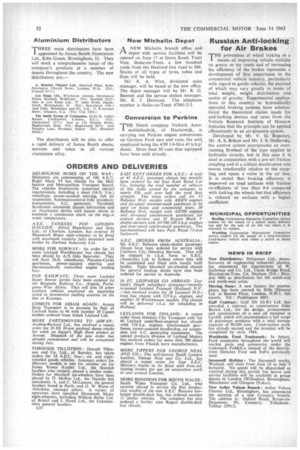Russian Anti-locking for Air Brakes
Page 54

If you've noticed an error in this article please click here to report it so we can fix it.
THE prevention of wheel locking as a means of improving vehicle stability on greasy or icy roads and of increasing the efficiency of the brakes represents a development of first importance to the commercial vehicle industry, particularly with regard to goods vehicles, the payload of which may vary greatly in terms of total weight, weight distribution and centre of gravity. Experimental applications in this country to hydraulically operated braking systems have substantiated the theoretical claims made for anti-locking devices and news from the Vehicle Research Institute of Moscow indicates that the principle can be applied efficaciously to an air-pressure system.
Developed by Mr. V. G. Rozanov, Mr. A. S. Brikov and Mr. J. S. Orzhevski, the control system incorporates an overrunning flywheel of the type applied to hydraulic circuits, but in this case it is
used in conjunction with a pre-set friction coupling and at a critical deceleration rate moves rotationally relative to the coupling and opens a valve in the air line. It is stated that braking efficiency is improved on road surfaces with friction co-efficients of less than 0.4 compared with locking the wheels but that efficiency is reduced on surfaces with a higher coefficient.
























































































































































